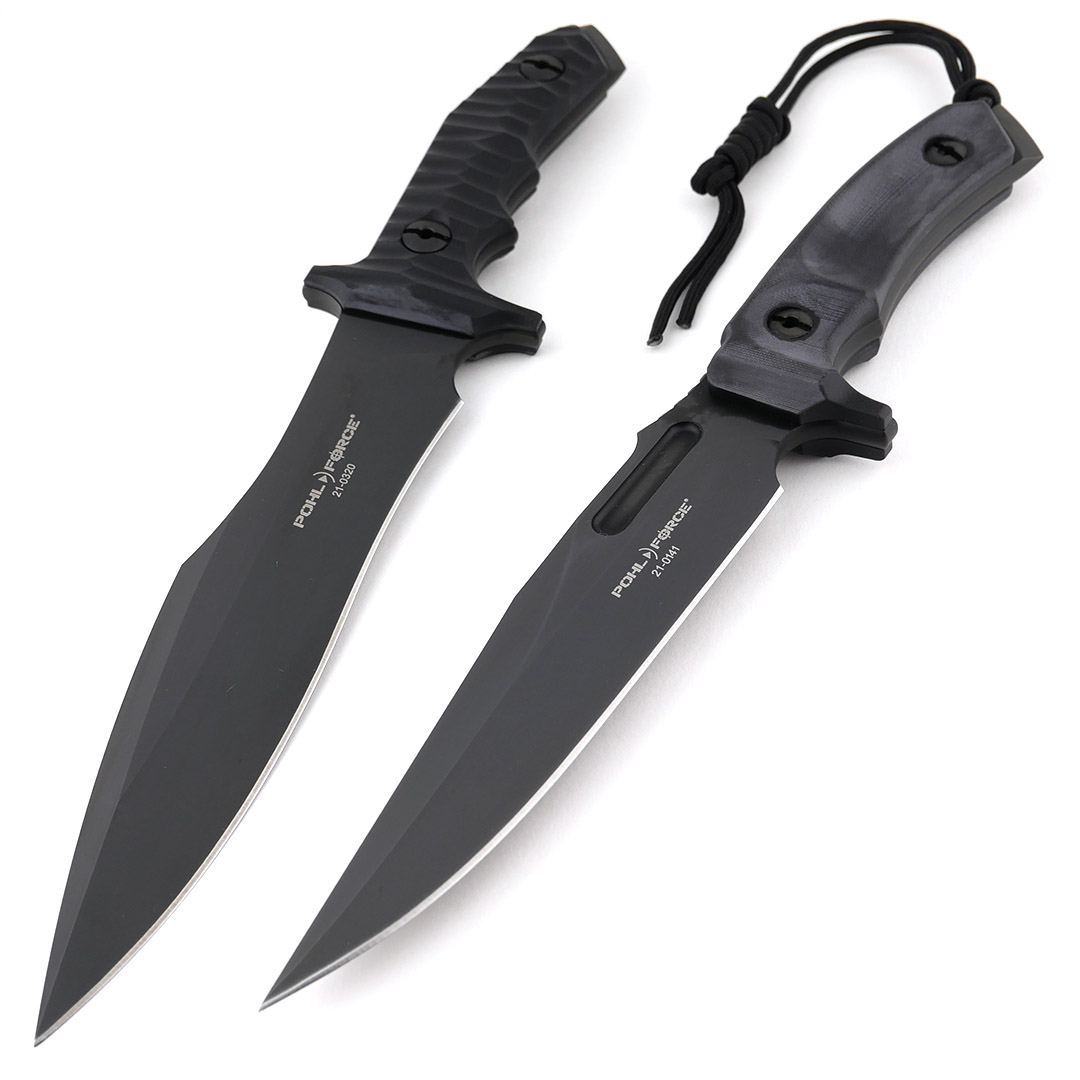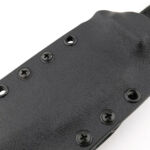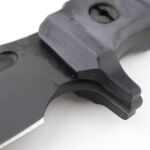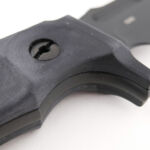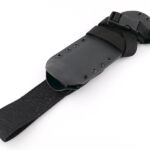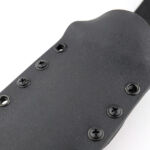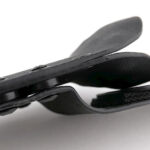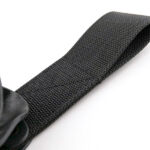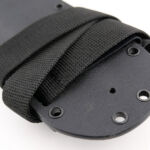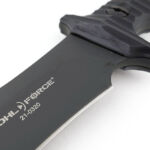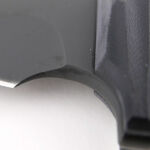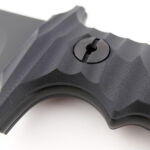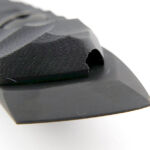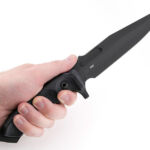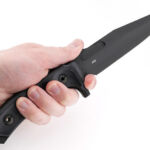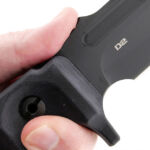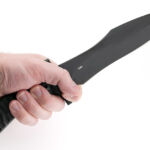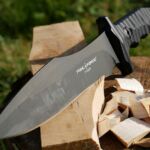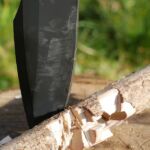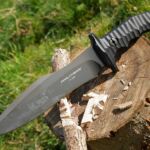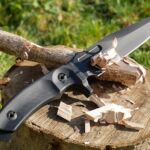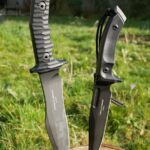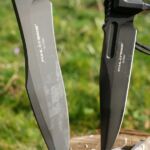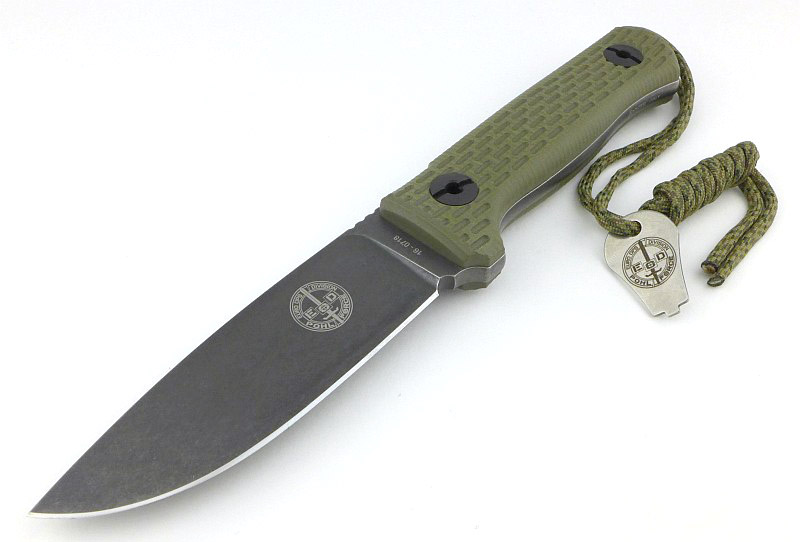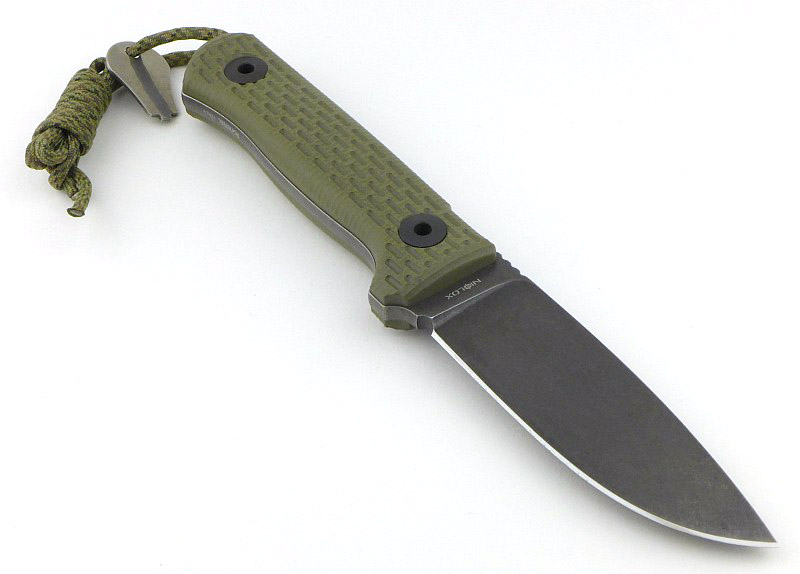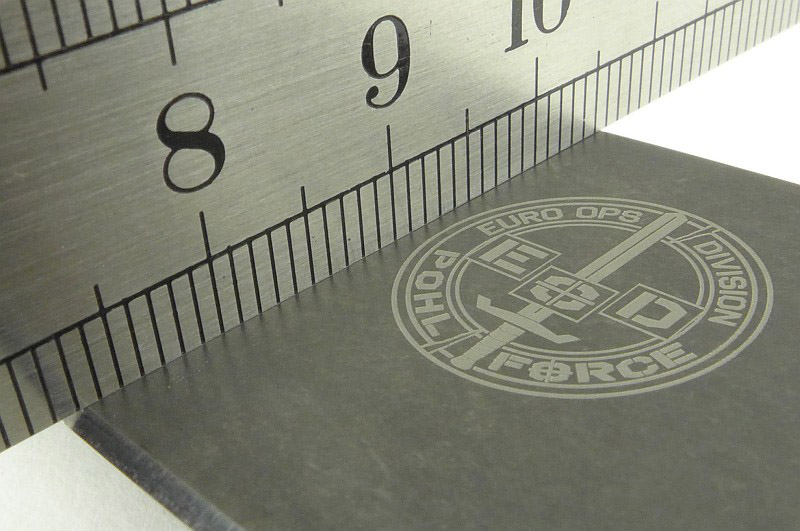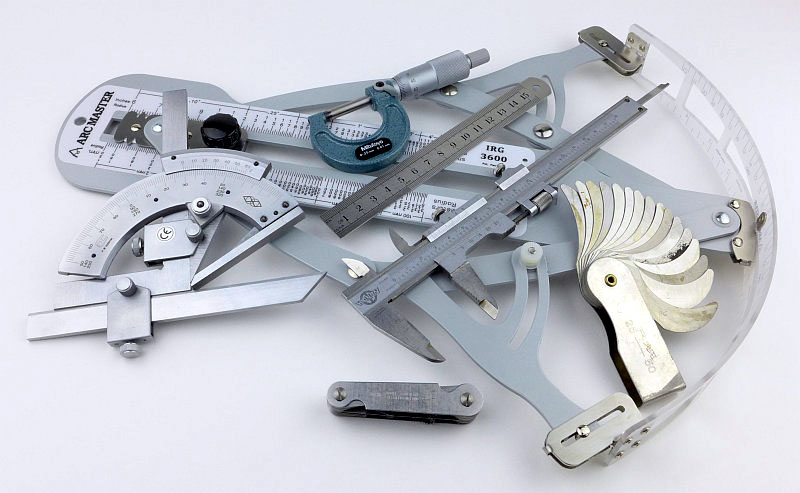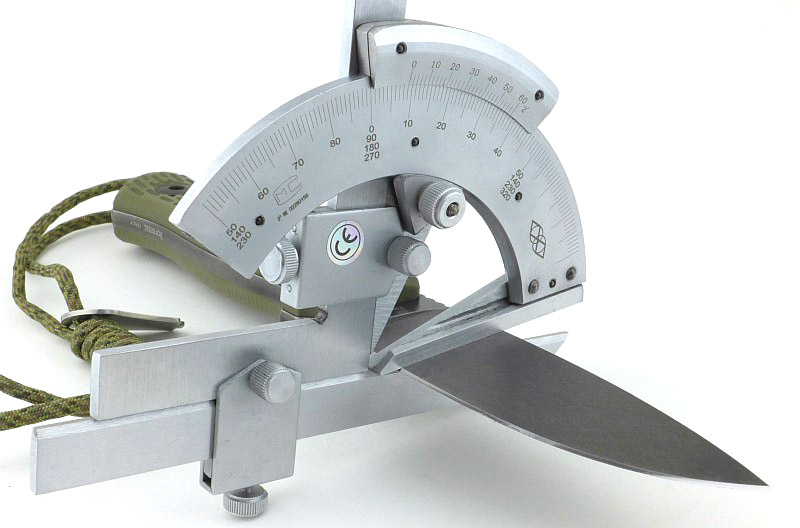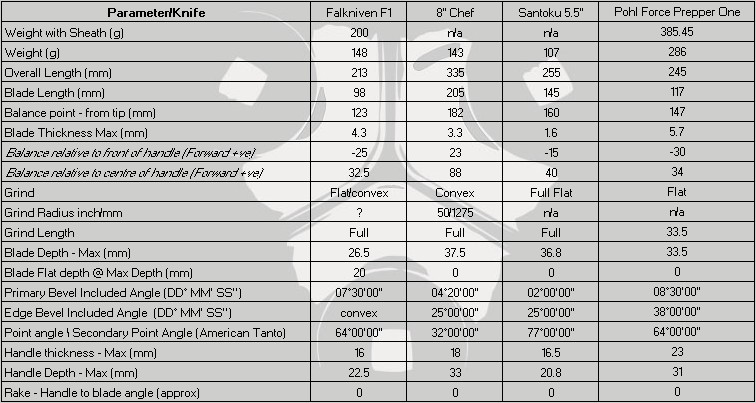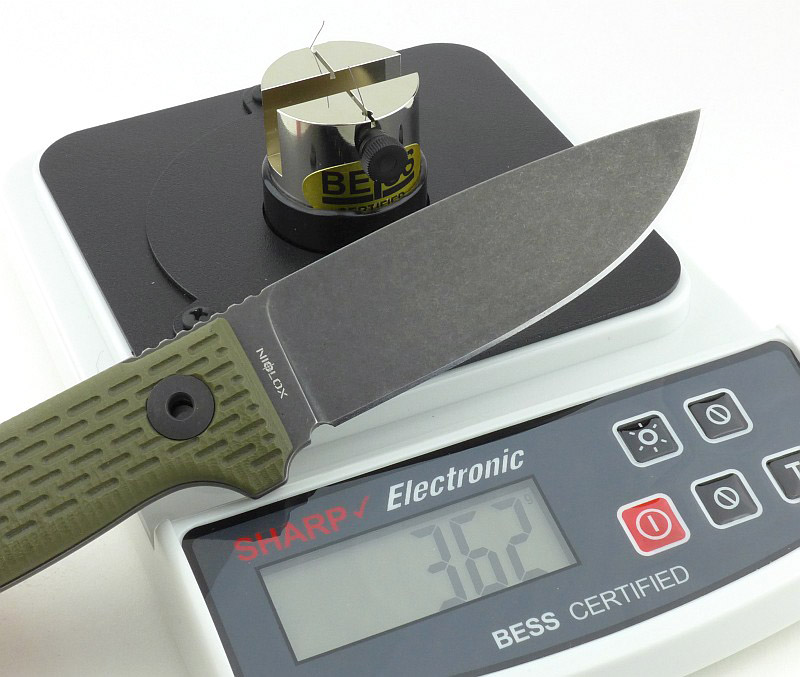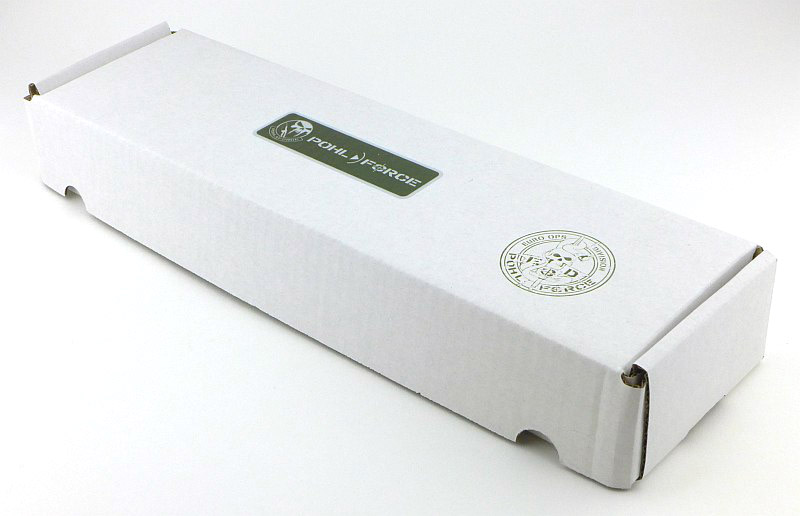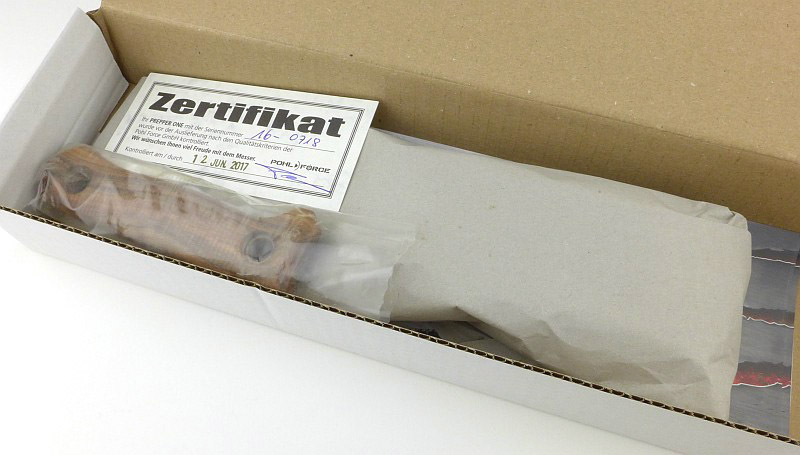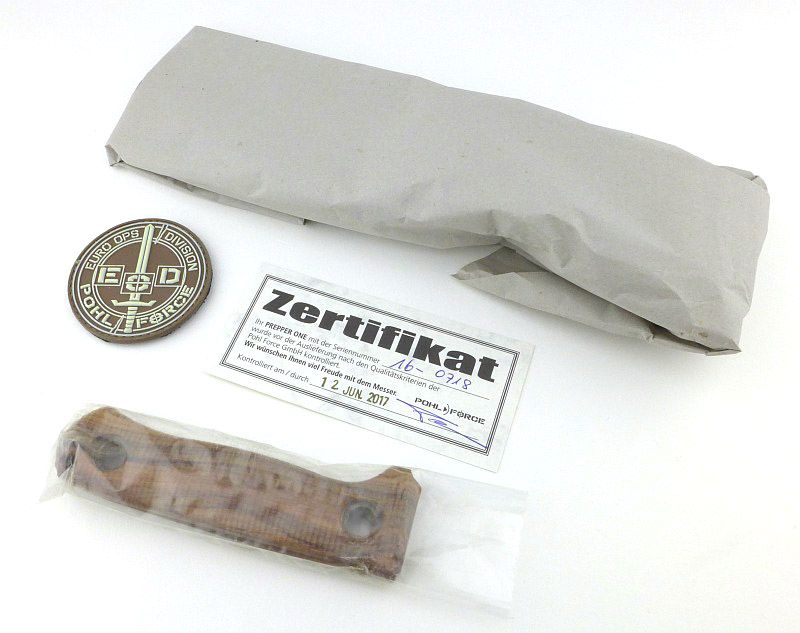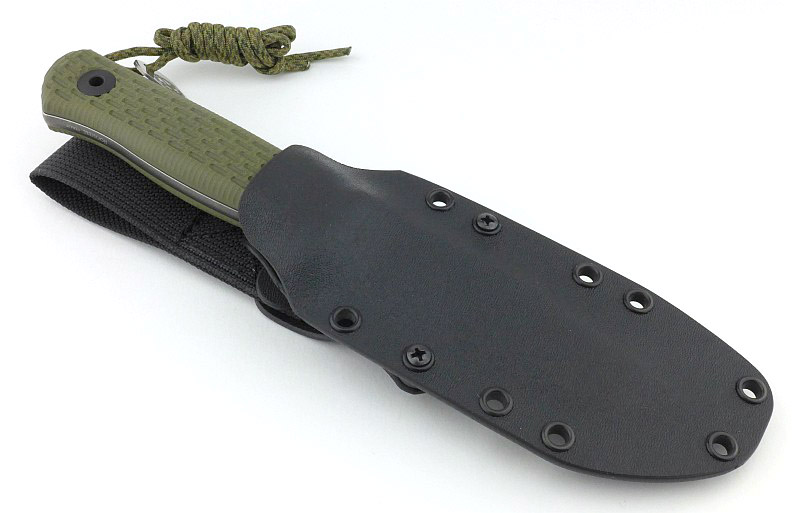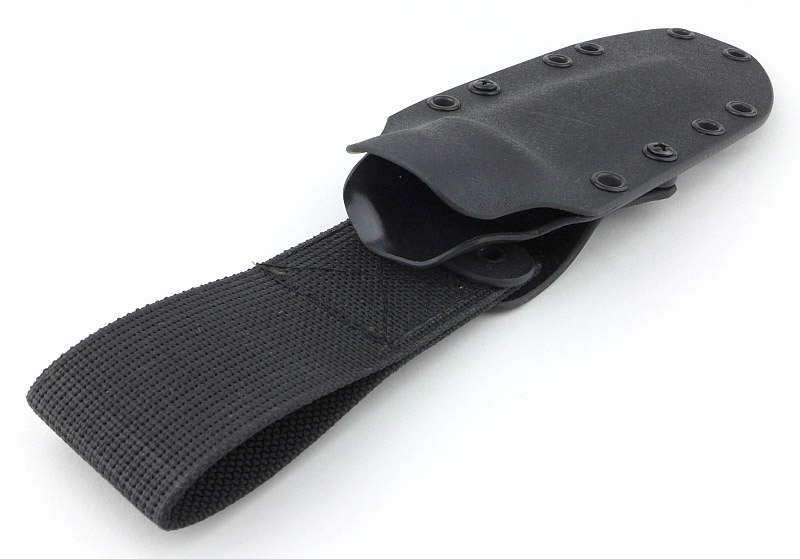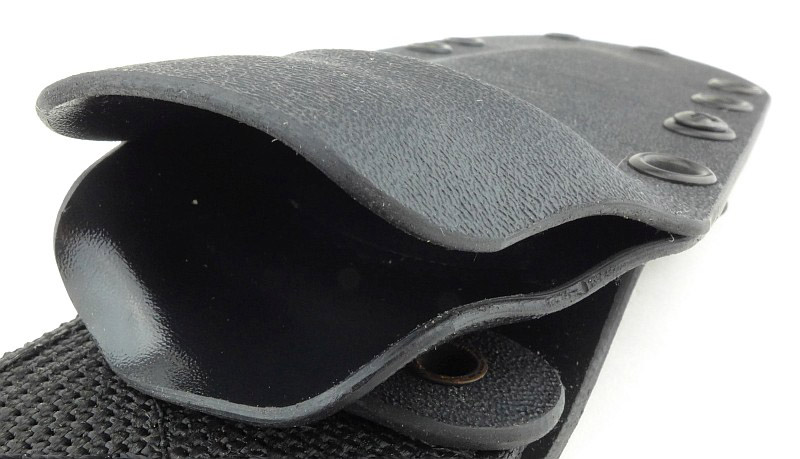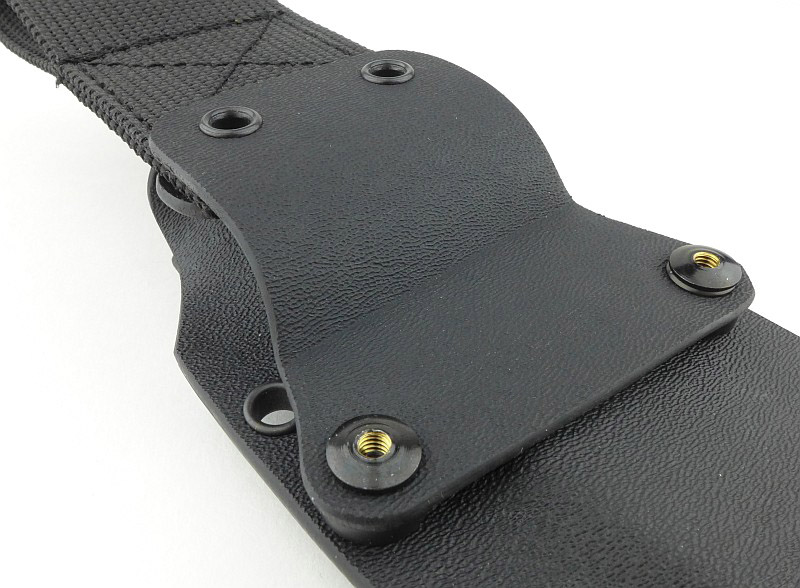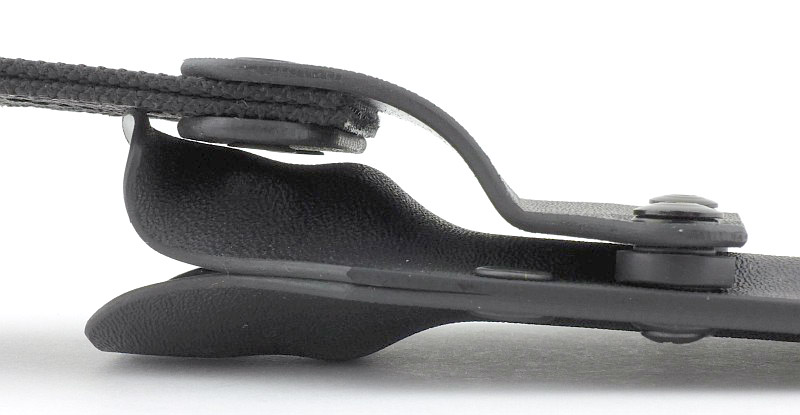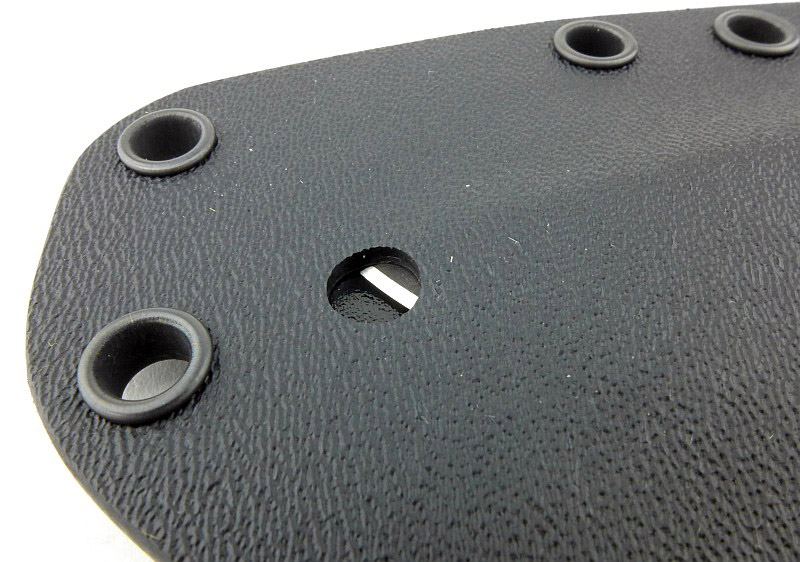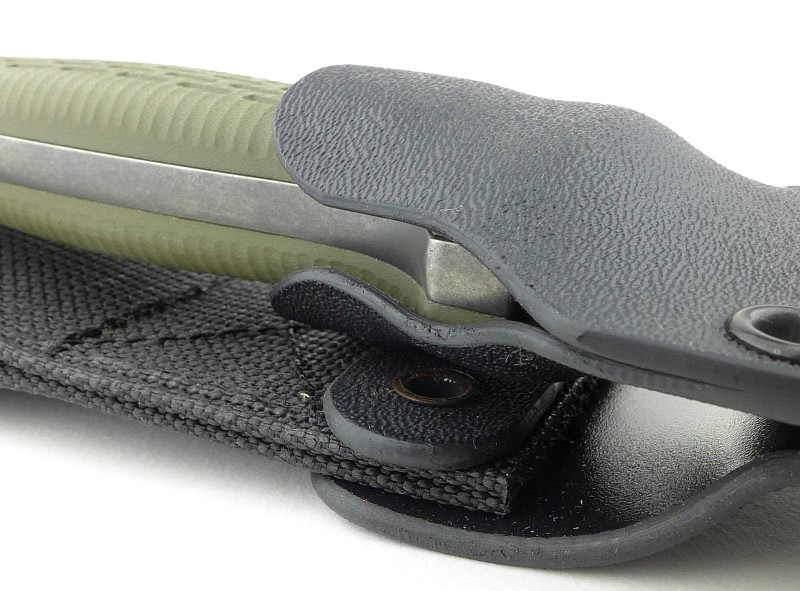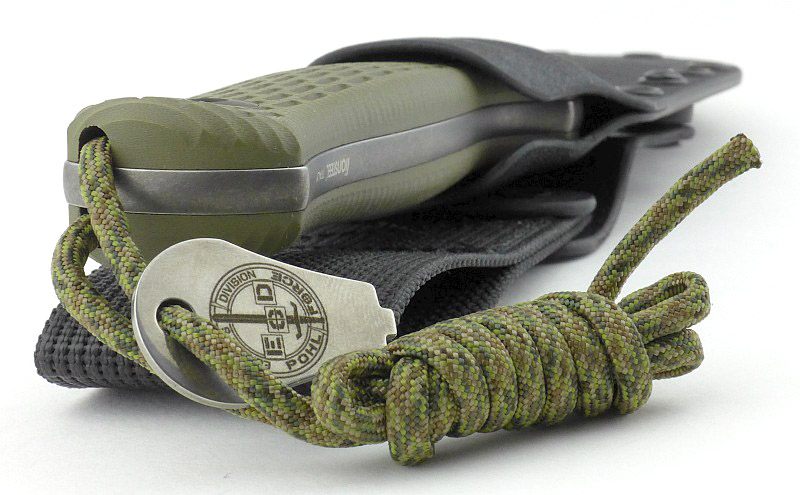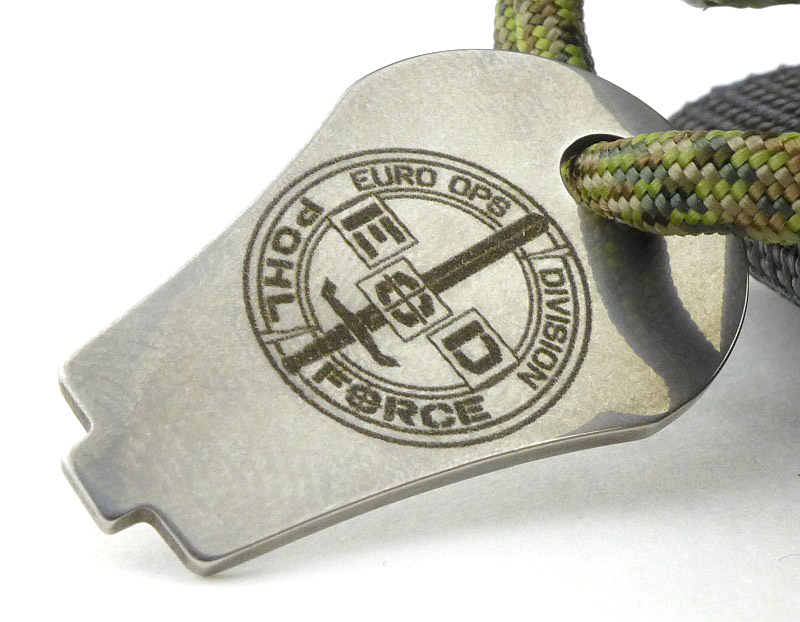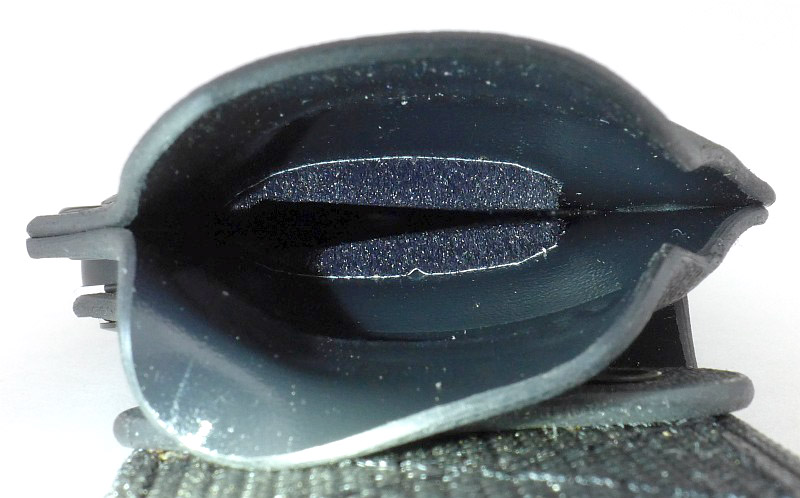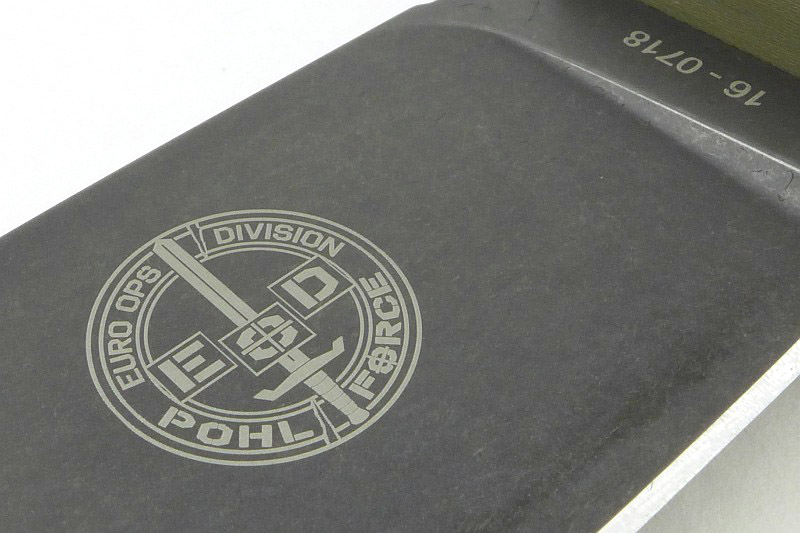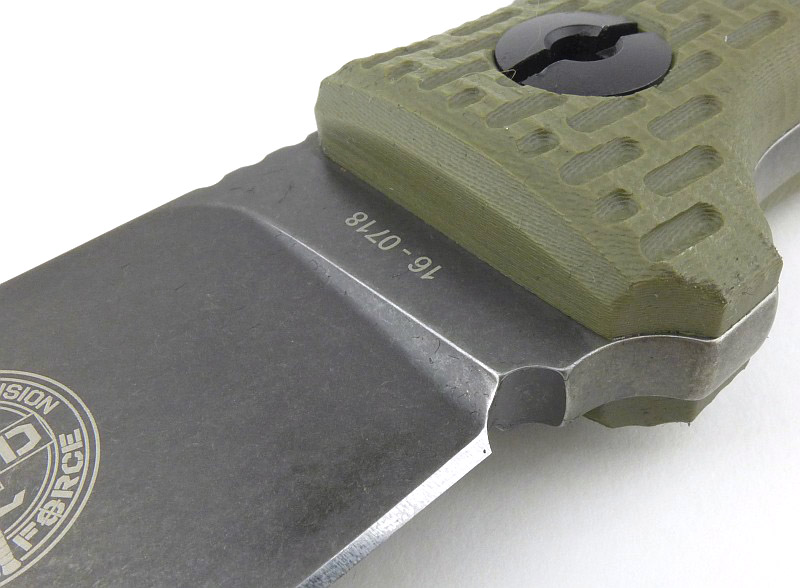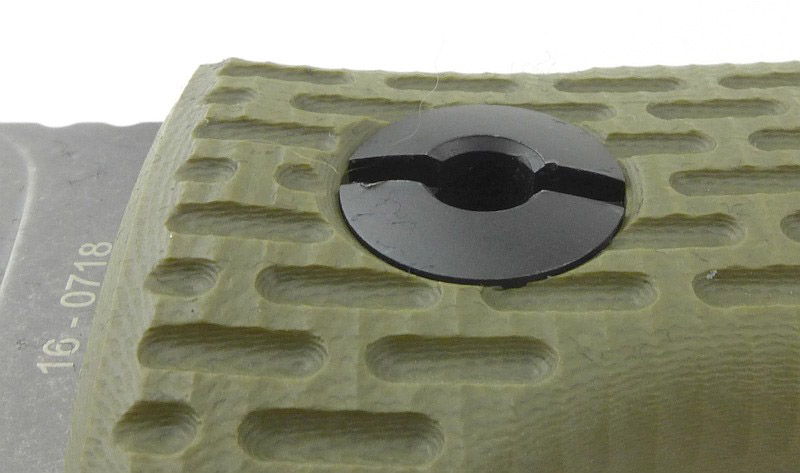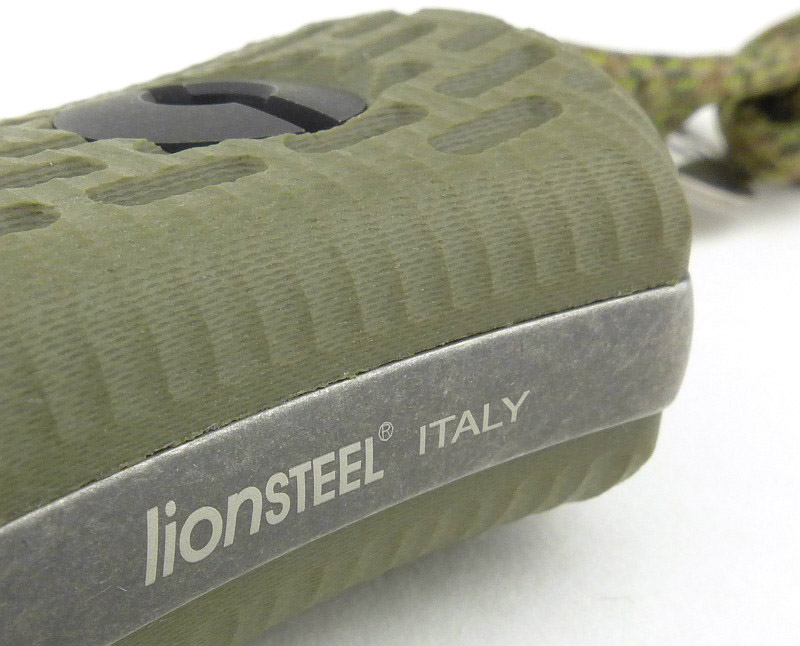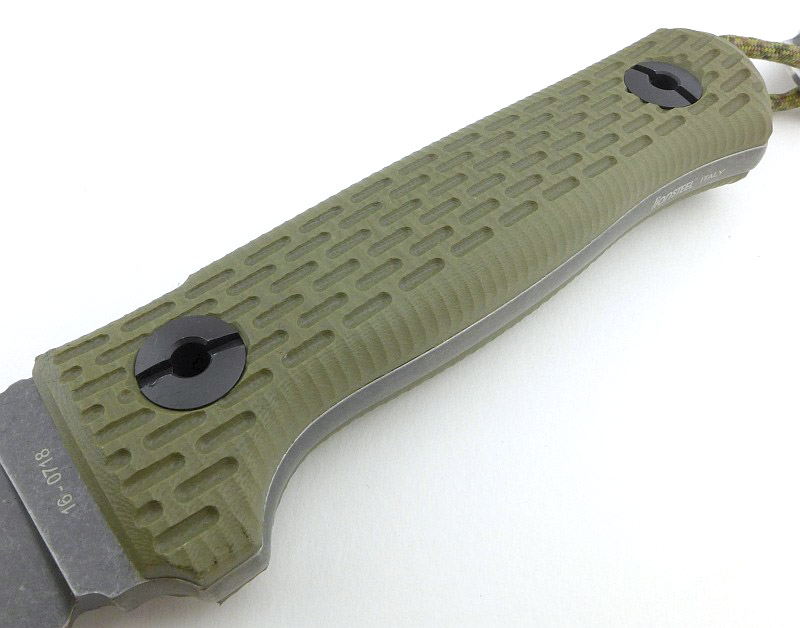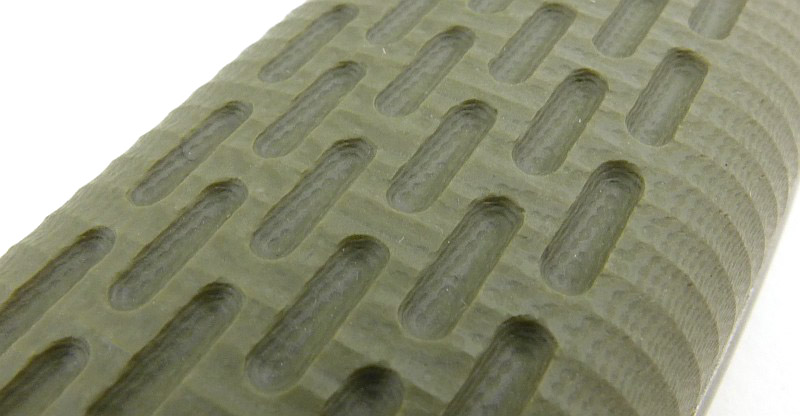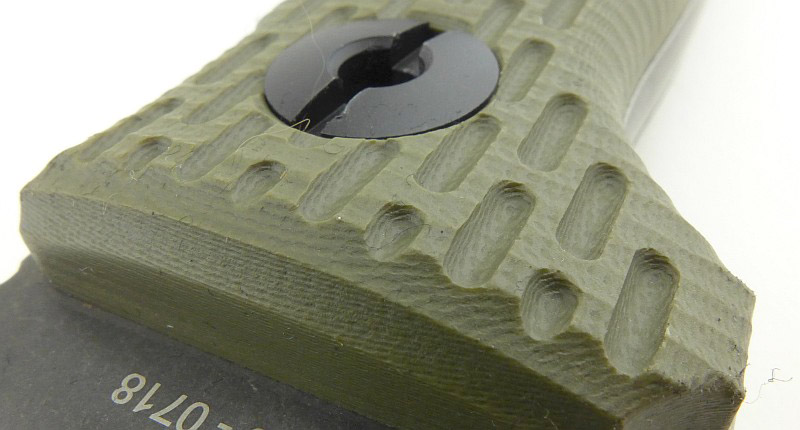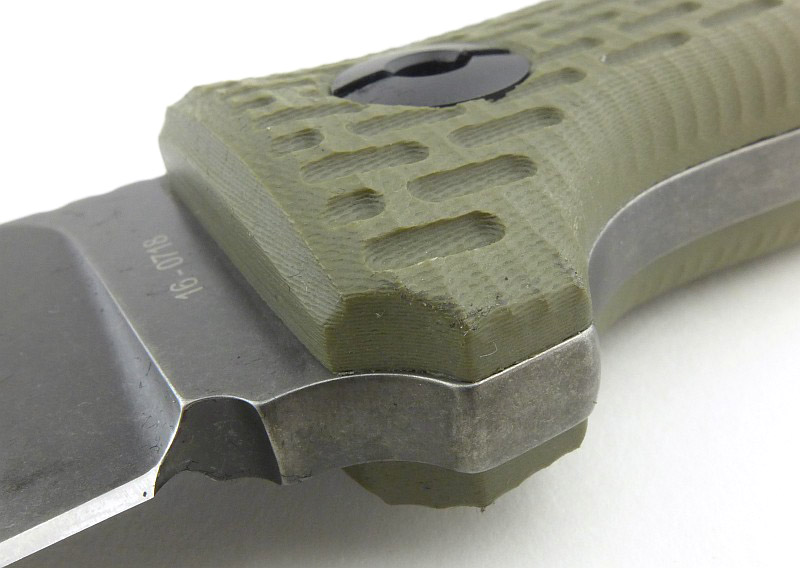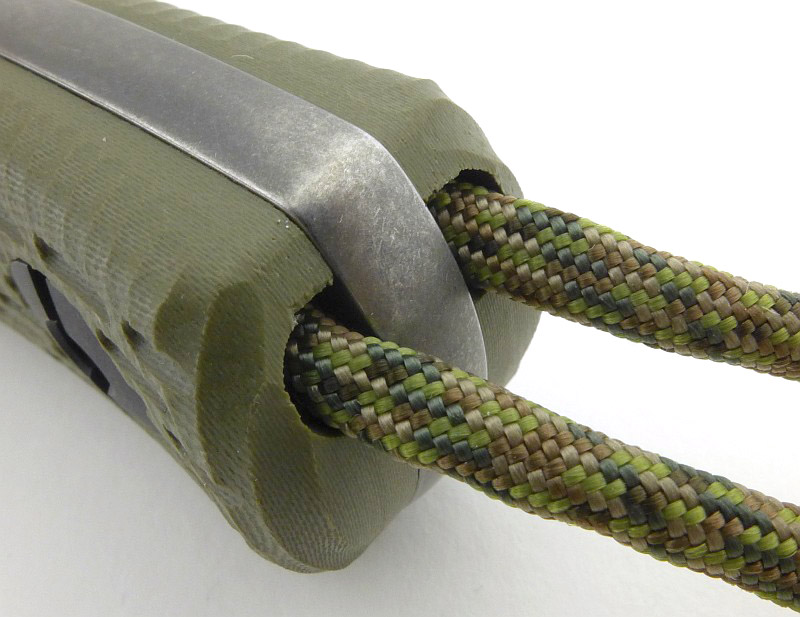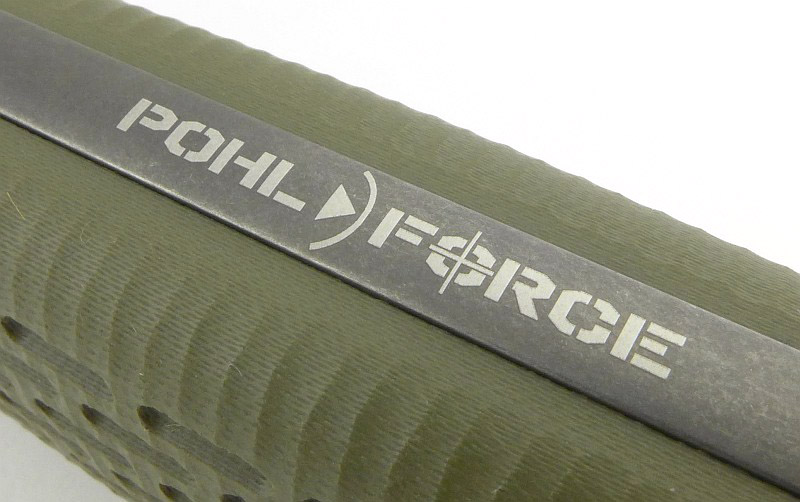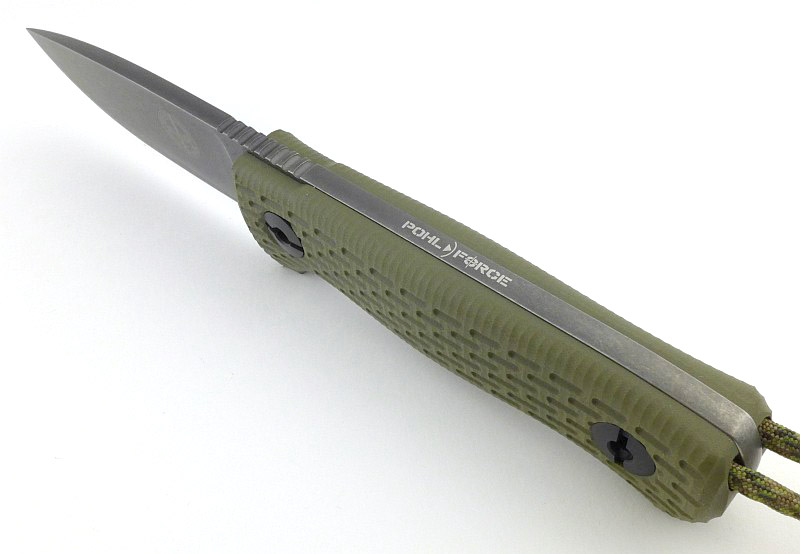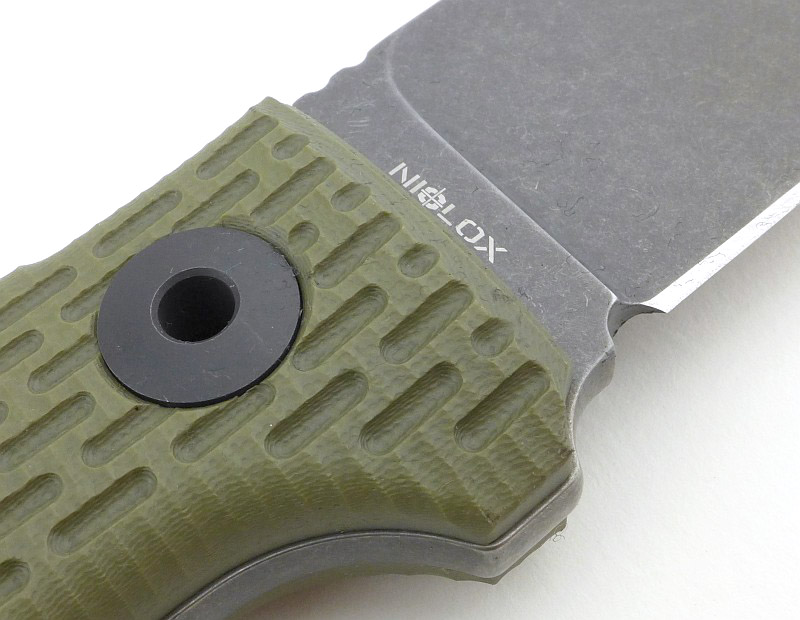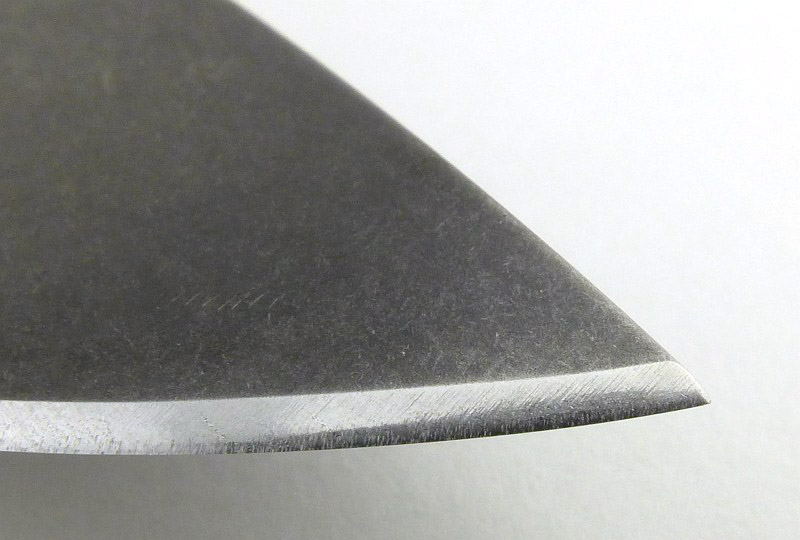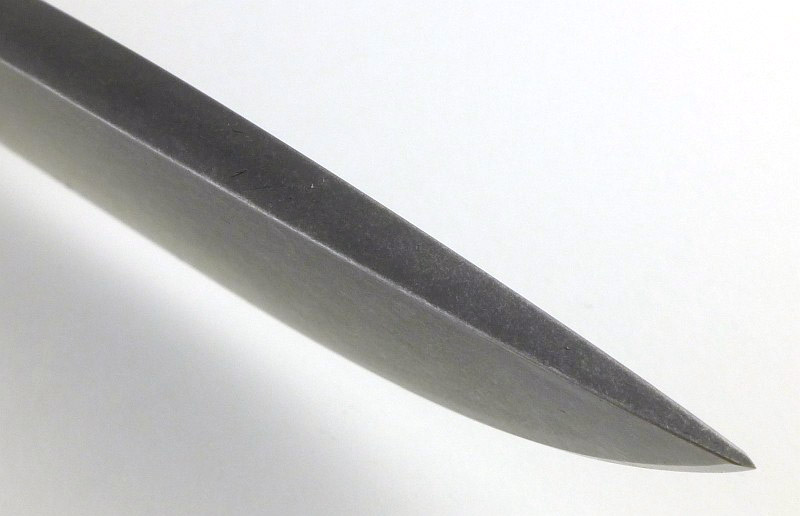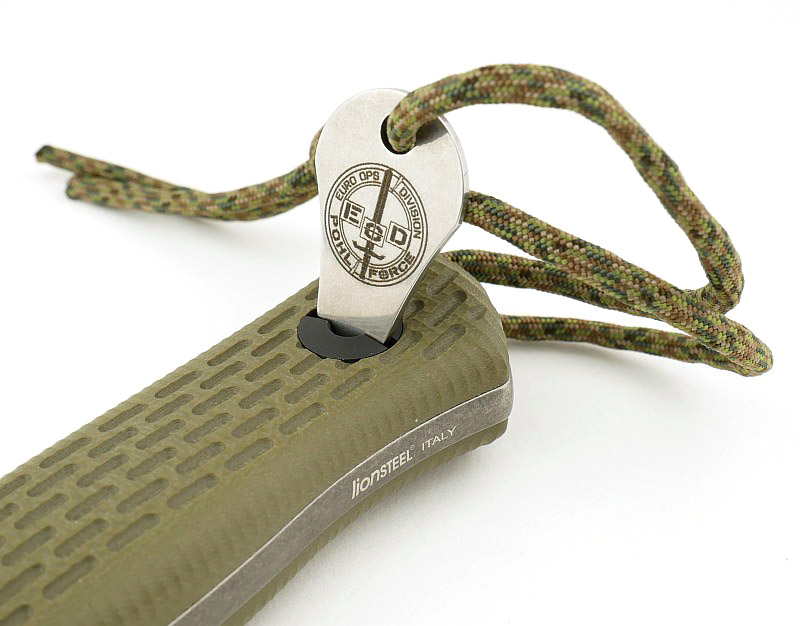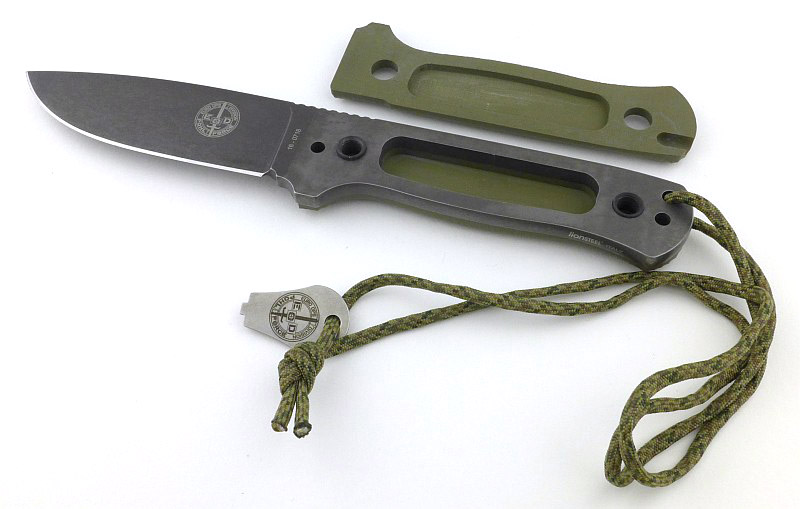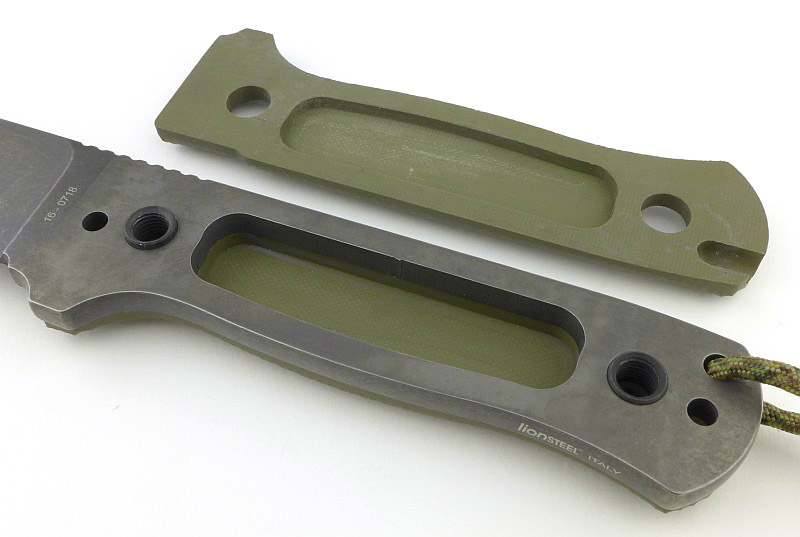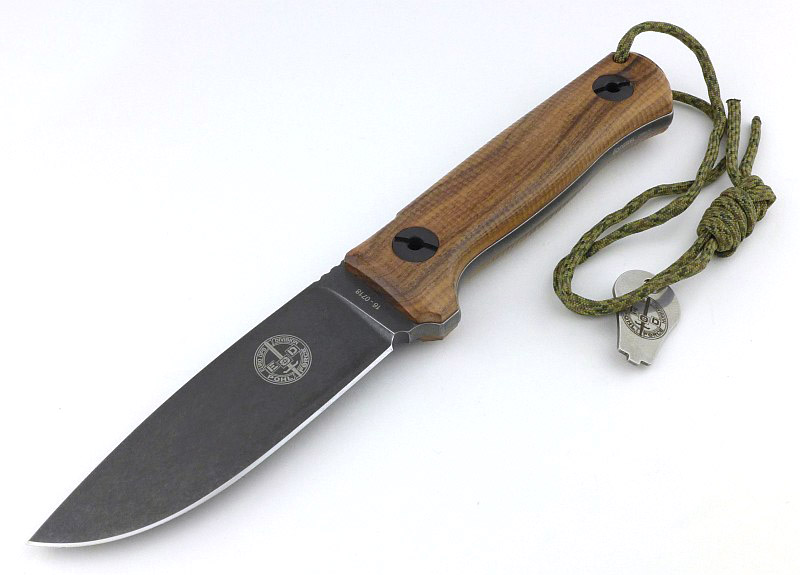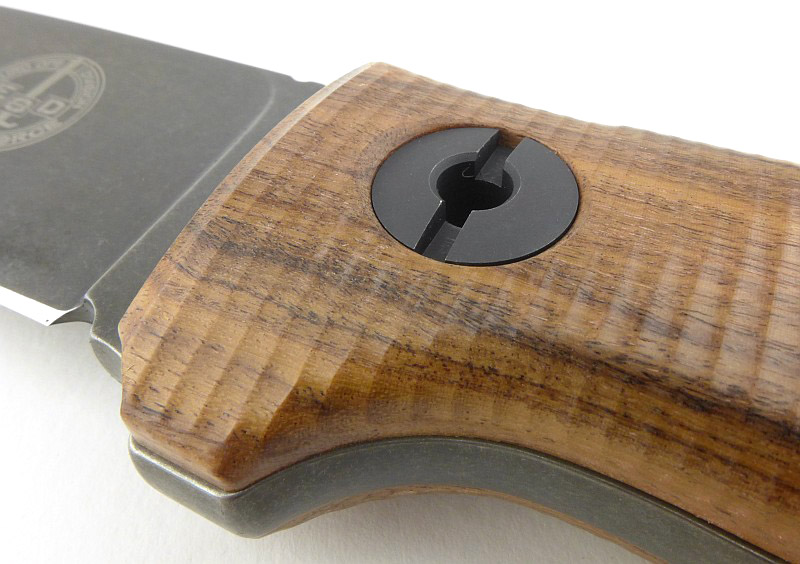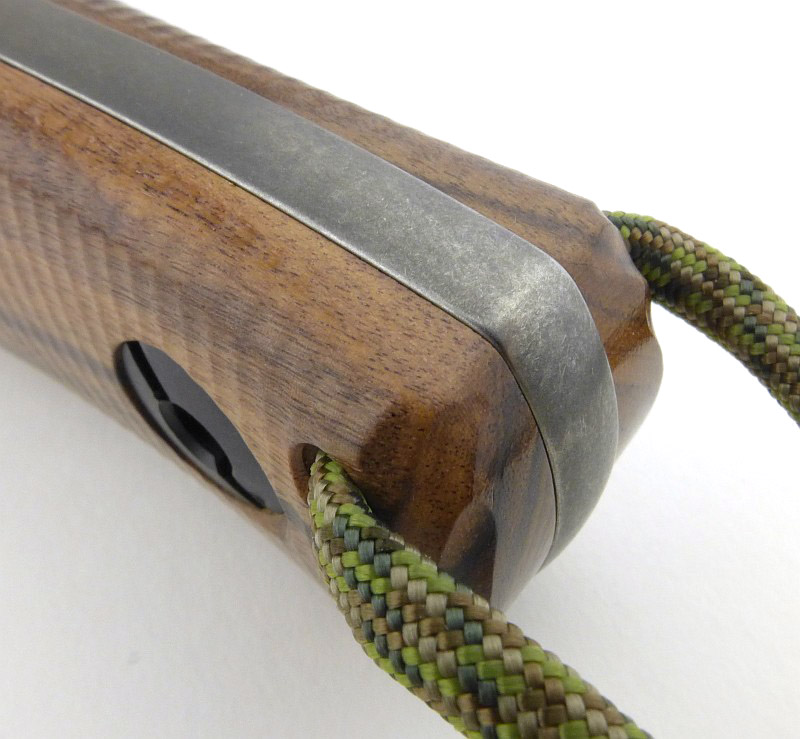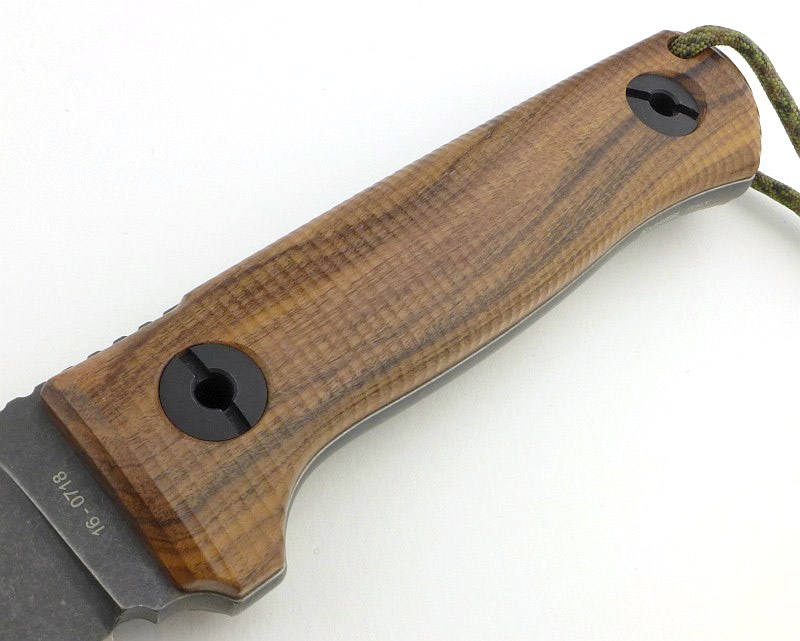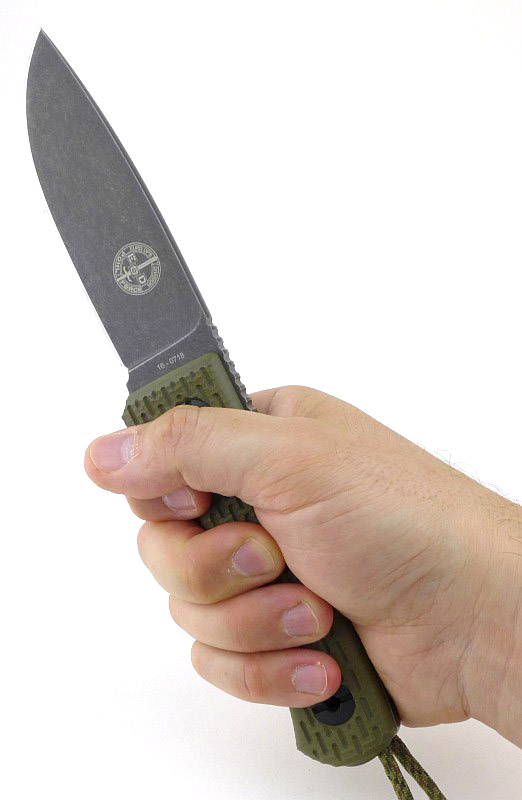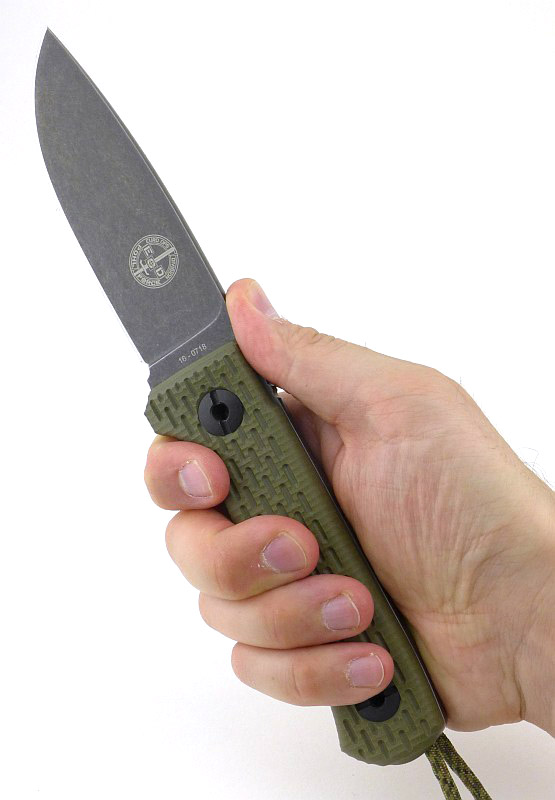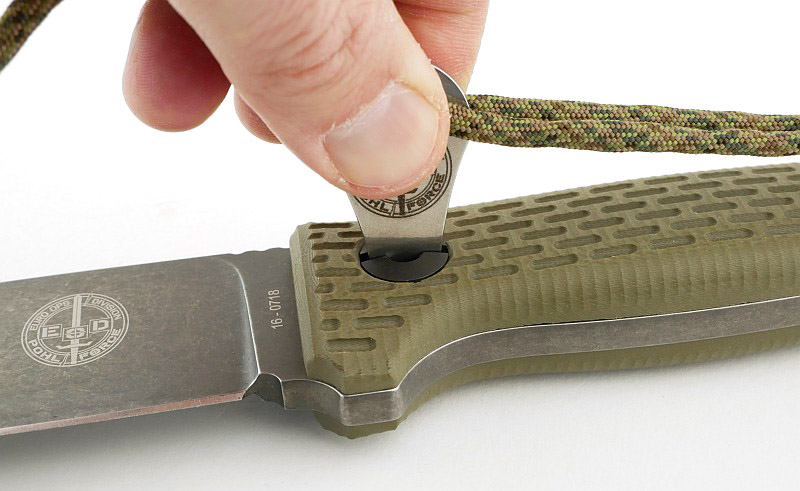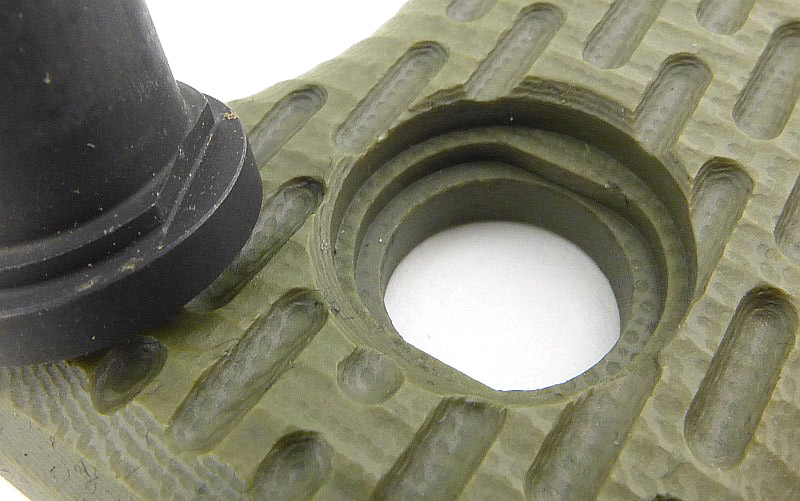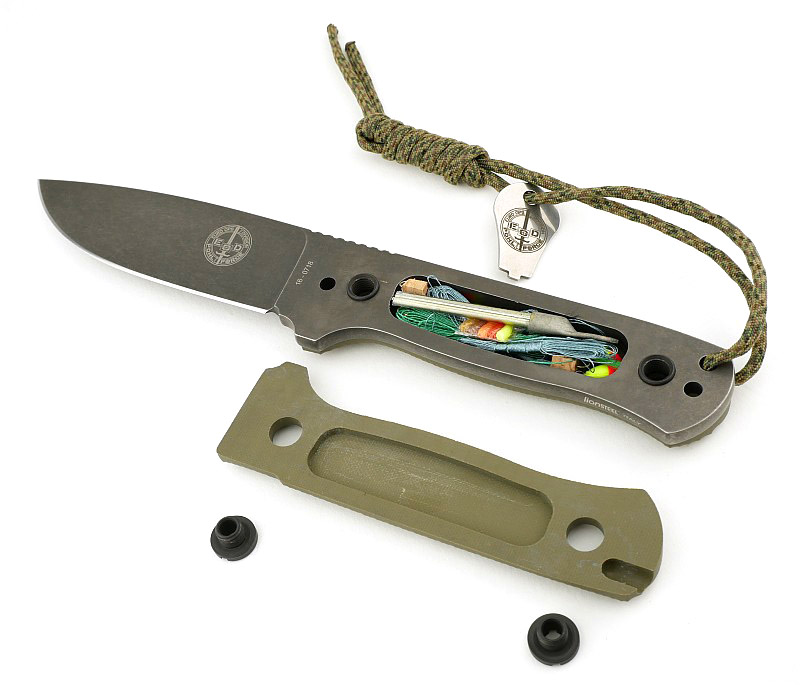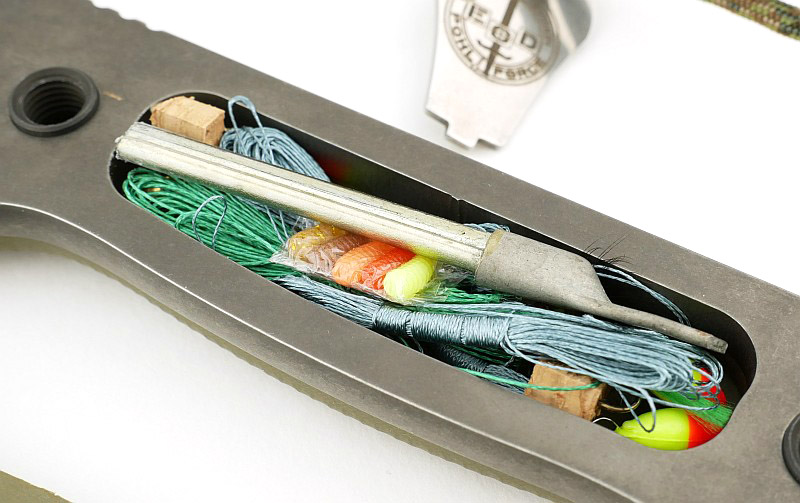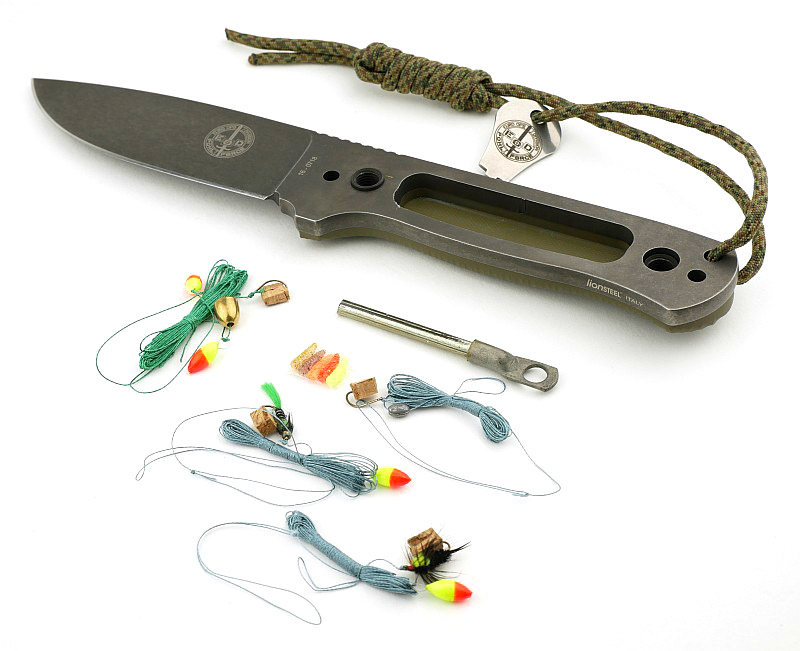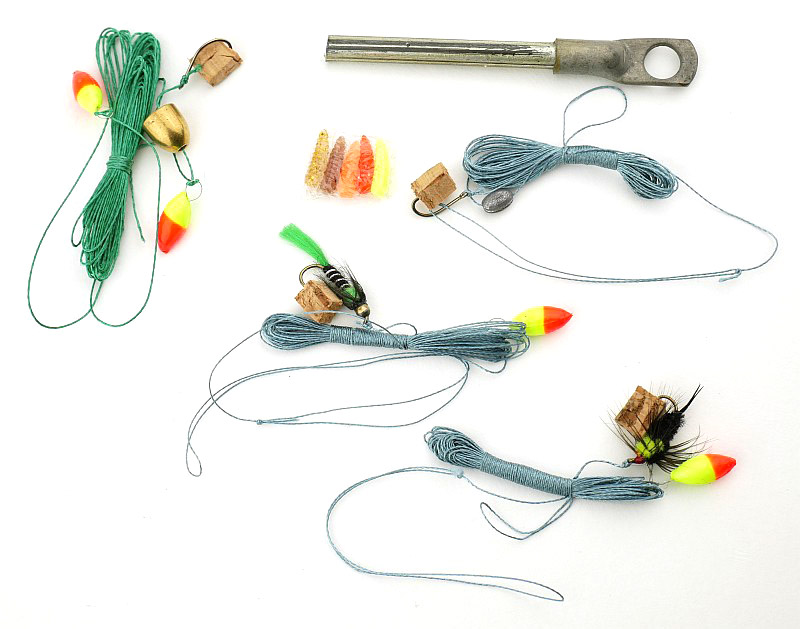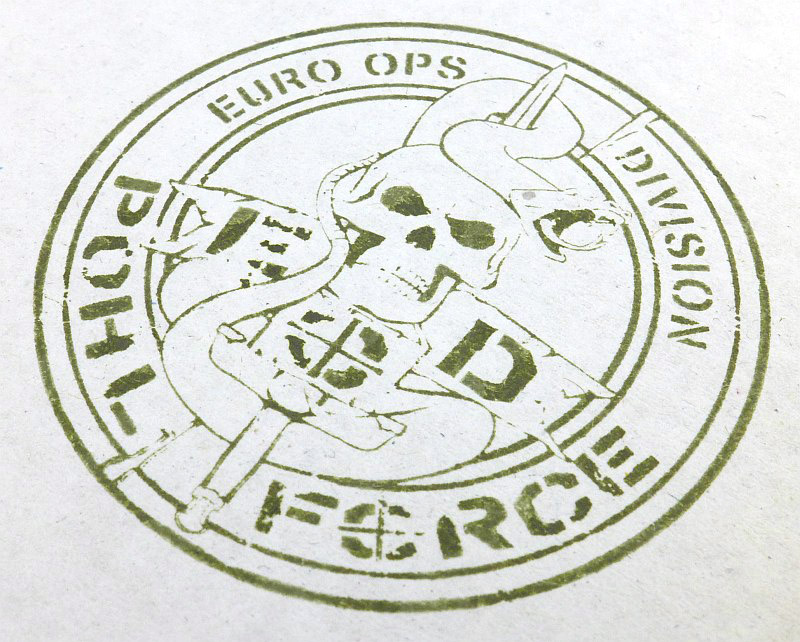Based on the Pohl Force Mk-8 and Mk-9 knives designed by Dietmar Pohl for the movie Rambo Last Blood, Dietmar has now modified the designs of these two hero knives to create the Tactical Eight and Tactical Nine knives. With slightly reduced dimensions and using D2 steel, the Tactical Eight and Tactical Nine have been tweaked and optimised by Dietmar Pohl to make them more real-world usable. Join me in this review of the Tactical Eight and Nine for a detailed look at these ‘practical’ versions of the Rambo Last Blood movie knives.
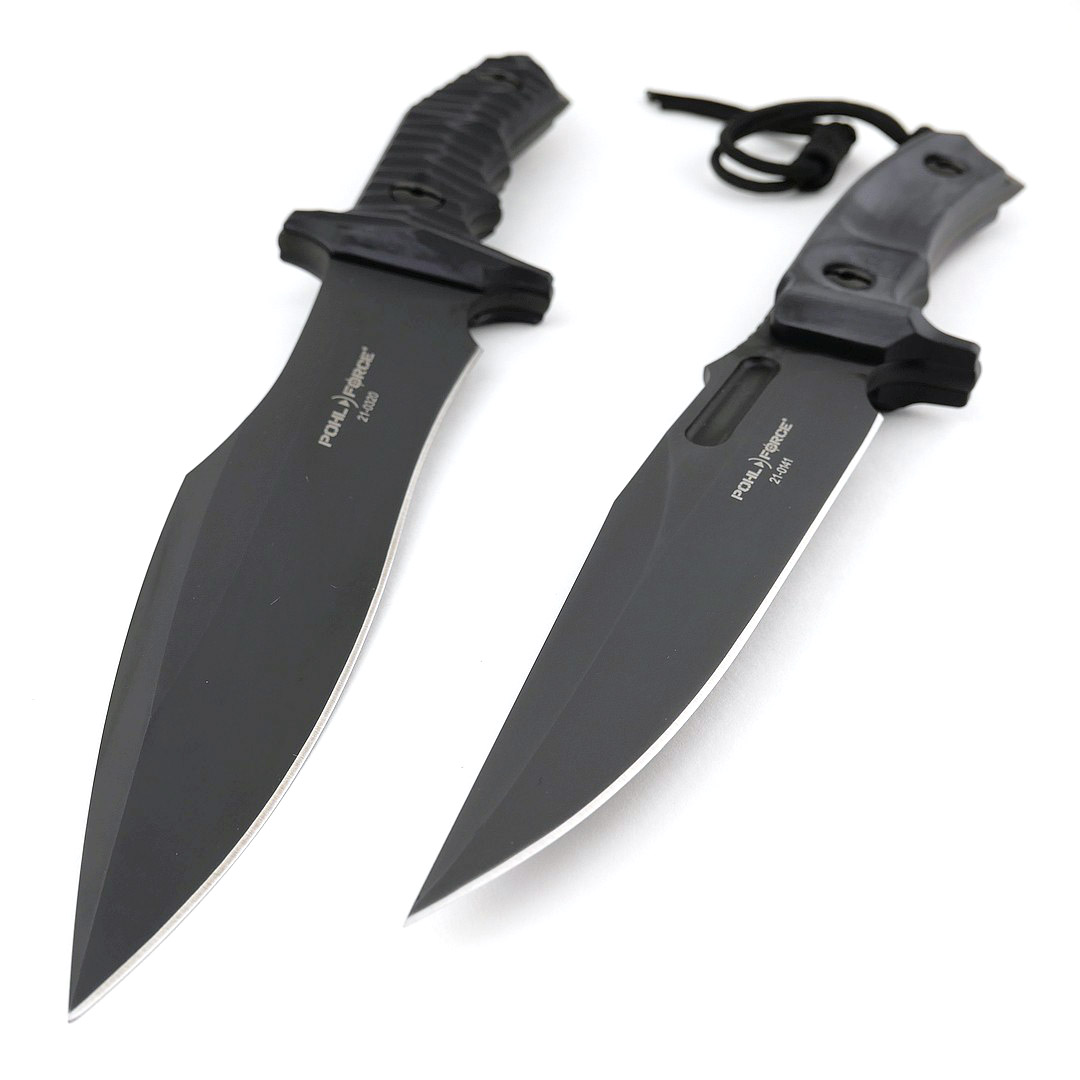
Video Overview
This video is a detailed look at the Tactical Eight and Tactical Nine Models, from handling to technical measurements. Hopefully something for everyone and you should have a better idea if you should also pick up one or both.
The Tactical Eight’s Sheath:
The models on test here both use the kydex sheath option (a leather sheath version is available). For the Tactical Eight, a leg cord is provided. The sheath is constructed using eye rivets, and these allow for the belt holder to be attached with four screw bolts that you can remove and flip the sheath round for right/left handed use. A drainage hole is included at the tip of the knife on one side of the sheath. The belt hanger/loop is a very heavy webbing, heavy enough to be semi-rigid. The moulded lips of the sheath fully cover the front of the handle and guard.
A good look round the Tactical Eight – Things to look out for here are:
The Tactical Eight retains all of the identity of the Mk-8 it was based on. The handle scales extend over the sides of the finger guard making it wider and more comfortable to bear into. There is a hidden lanyard hole; the lanyard hole in the blade tang is concealed under the handle scales and a milled channel allows the cord to run under the G-10 and neatly to the rear. Large hollow bolts hold the handle scales in place and would also allow further locations to fit cords.
A large choil and thumb jimping allow for various grip options.
The Tactical Nine’s Sheath:
For the Tactical Nine, a leg strap with plastic clip buckle is provided. The leg strap also includes an elasticated section to provide better comfort. The elastic is added on the inside of the strap in such a way that should it fail, the strap itself is not compromised and would not break. The sheath is constructed using eye rivets, and these allow for the belt holder to be attached with four screw bolts that you can remove and flip the sheath round for right/left handed use. A drainage hole is included at the tip of the knife on one side of the sheath. The belt hanger/loop is a very heavy webbing, heavy enough to be semi-rigid. The moulded lips of the sheath fully cover the front of the handle and double guard.
A good look round the Tactical Nine – Things to look out for here are:
The Tactical Nine also retains all of the identity of the Mk-9 it was based on with highly distinctive curving blade (although without the sub-hilt). The handle scales extend over the sides of the double finger guard making it wider and more comfortable to bear into. There is a hidden lanyard hole; the lanyard hole in the blade tang is concealed under the handle scales and a milled channel allows the cord to run under the G-10 and neatly to the rear. Large hollow bolts hold the handle scales in place and would also allow further locations to fit cords. Handle scale texture is very pronounced on the Tactical Nine with a series of interlocking grooves giving a lot of grip.
The Blade and Handle – Detailed Measurements:
For full details of the tests and measurements carried out and an explanation of the results, see the page – Knife Technical Testing – How It’s Done.
The blade is made from D2 steel.
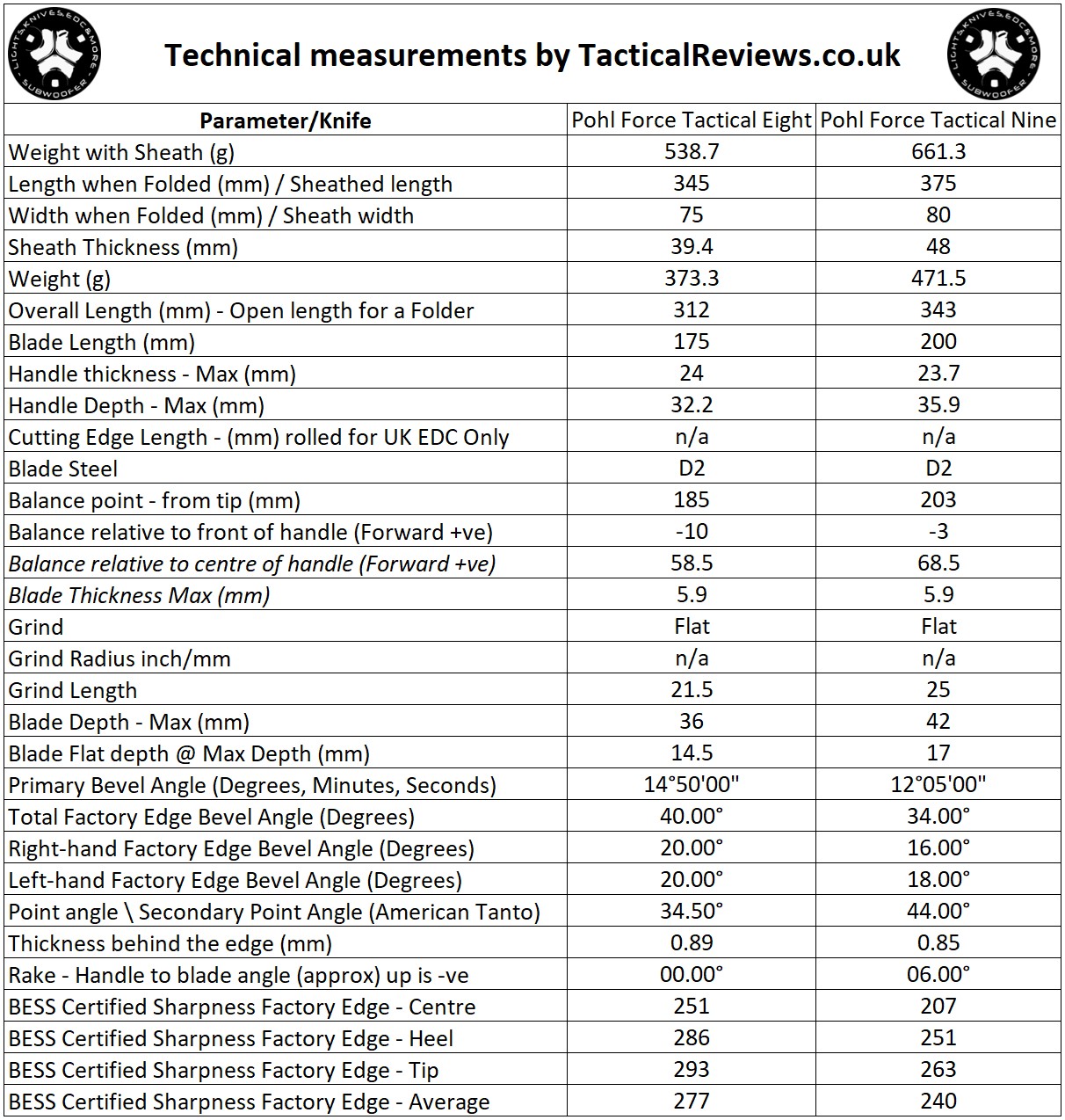
The Factory edge up close – NEW FOR 2022!:
Followers of Tactical Reviews will know my views on factory edges, but to recap:
Anyone using a knife will need to sharpen it. That first factory edge is just like the first tank of fuel that a new car comes with (or first charge of the battery).
A good factory edge is a ‘nice to have’ but not a ‘make or break’ for a good knife, as you will be putting your own edge onto it soon enough.
The factory edge does however indicate the care a knife maker has put into the final finish.
It is for this reason Tactical Reviews measures factory edge sharpness and specifications, and includes this information in the detailed technical testing.
As a further look at the factory edge, this section has been added to include some high magnification photos of the factory edges.
Tactical Eight
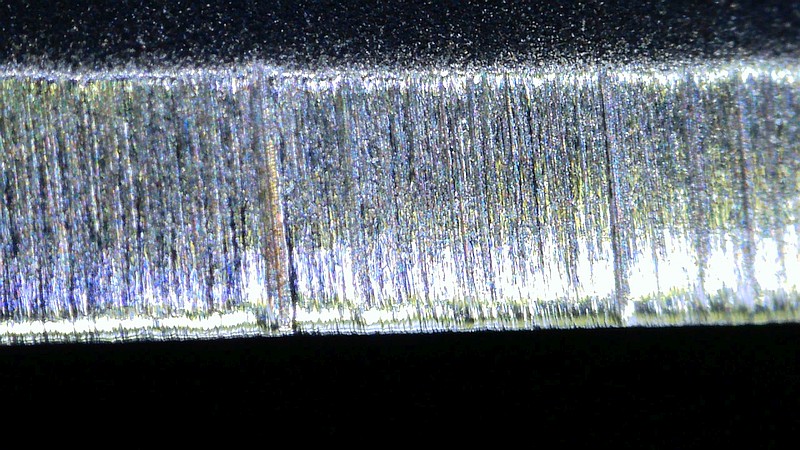
Tactical Nine

What is it like to use?
Starting this section with a couple of side-by-side comparisons of the Tactical Eight and Nine. In this first photo, the knives are unsheathed and their different scale and ‘weight’ (both visually and in amount of steel). The Tactical Eight being the much slimmer and more compact blade, and the Nine having a bigger presence and striking power.
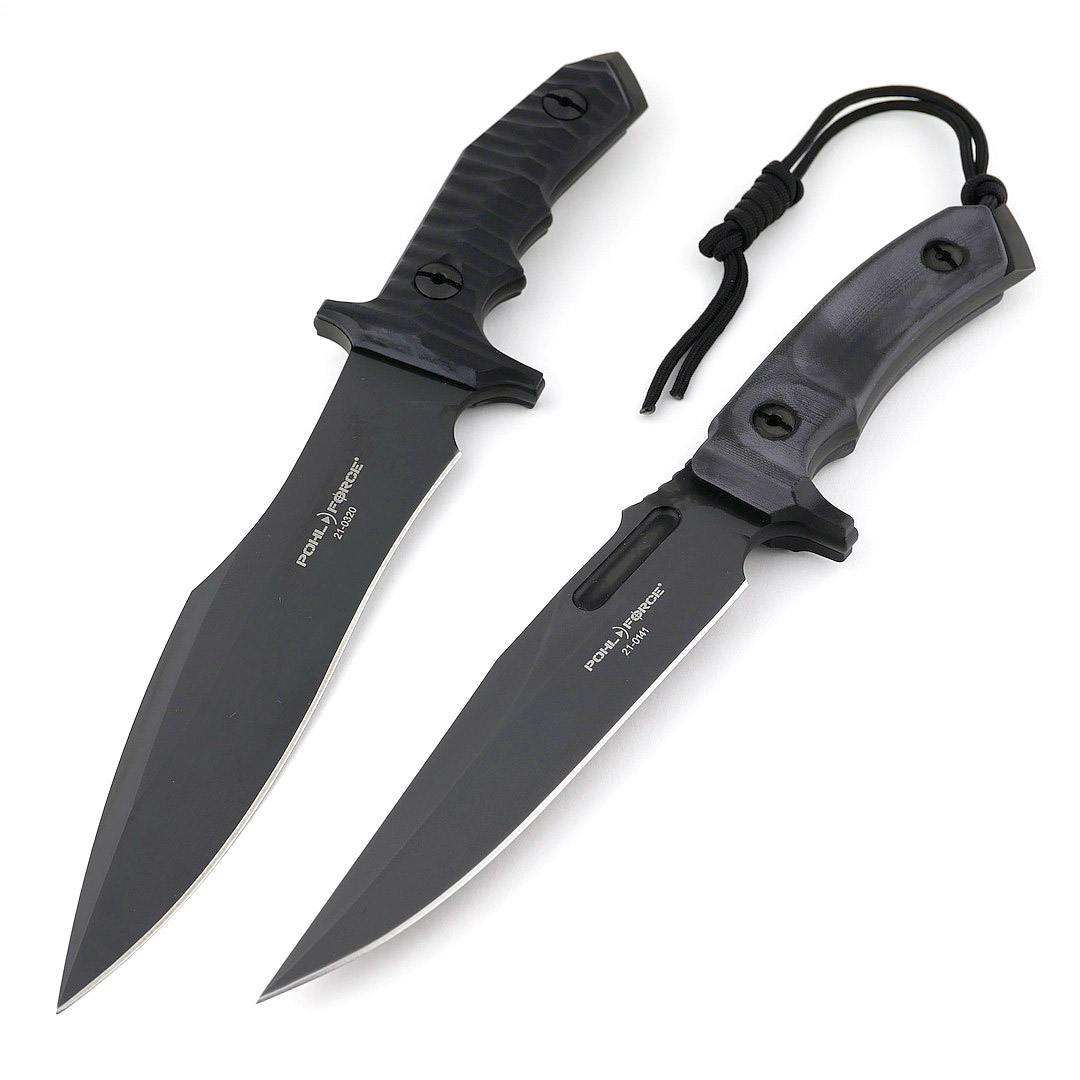
Once encased in kydex the difference in size is much less apparent; yes the Nine is a larger overall package, but not as much as you might think.
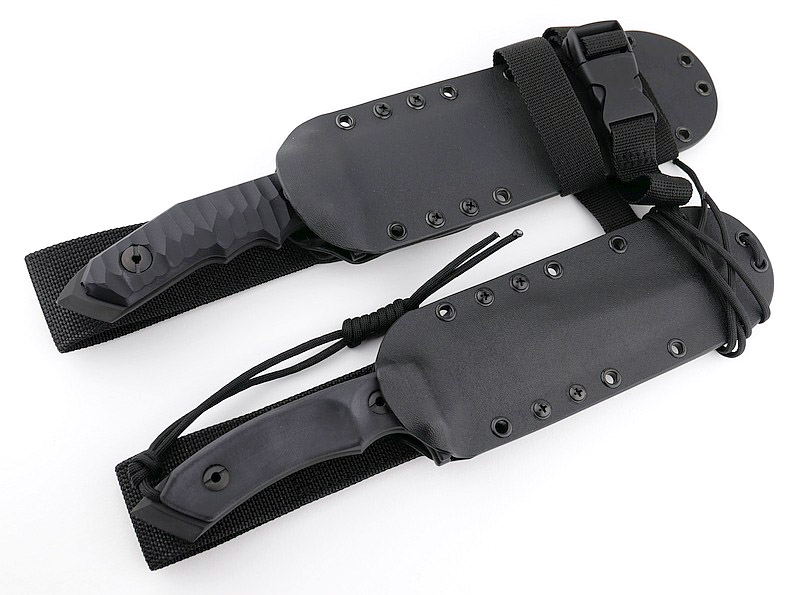
Onto some observations about the handling; with its single guard, the Tactical Eight allows the thumb-forward type of grip and has a thumb ramp with deep jimping for excellent grip. The large choil allows for a choked grip to be used for fine control. However, when tightening this type of grip the heel of the edge can easily cut into your finger, so beware of this.
The handle scales are smooth and shaped well. The spine of the handle is wide and allows a lot of pressure to be applied comfortably, combined with the well shaped finger groove that gives excellent stability.
For the Tactical Nine the grip is quite a different prospect to the Eight. To start with the double guard blocks the use of a forward thumb grip, but being a bigger knife and more of a chopper, this doesn’t feel out of place.
With the ‘practical’ version not having the sub-hilt of the Mk-9, it makes the knife more general purpose and the pronounced finger groove still provides a very stable hold.
With a larger choil than the Eight, the Nine’s choked grip is safer, although you always need to be careful with this type of hold. The double guard also pulls back the choked grip slightly keeping your finger away from the cutting edge.
I do need to mention something I’ve noted for both the Tactical Eight and Nine when it comes to re-sheathing the knives that can catch you out, and you find the striker digging into you hand.
With the use of kydex for the sheaths on test here, the mouth of the kydex sheath envelops the front of the handle and finger guard. To be able to push the knife fully into the sheath you need to grip the handle up and away from the guard. What then happens is that you end up with the striker pressing into your hand as you push the knife home; not very comfortable. The kydex is also quite a firm fit, so requires a reasonable amount of force to click the knife into place, force which translates into the striker digging into your hand sometimes pretty hard.
The leather sheath versions would not have this issue.
In just some of the cutting tests, I was using completely dry and seasoned wood, so not softer green wood. With the Tactical Nine having a serious chopping ability I took it to some fully dry pallet wood, which it destroyed with ease. In dry wood there is a tendency to bind as the depth of cut it is capable of grips the blade. Once you have a few clearance cuts the chips just fly.
The Tactical Eight is not really a chopper, you would need to baton with it for wood processing. It is a great utility knife and very happy at general purpose tasks with the point a good angle for piercing.
If you like the style of the Rambo Last Blood knives and want a hard use, practical, version then Tactical Eight and Nine are the knives that deliver on this. Unmistakably related to the Mk-8 and Mk-9, these practical versions are more usable and made to be put to work.
Review Summary
The views expressed in this summary table are from the point of view of the reviewer’s personal use. I am not a member of the armed forces and cannot comment on its use beyond a cutting tool or field/hunting knife.
Something that might be a ‘pro’ for one user can be a ‘con’ for another, so the comments are categorised based on my requirements. You should consider all points and if they could be beneficial to you.
_______________________________________________
What doesn’t work so well for me
_______________________________________________
Striker has a tendency to dig into the hand when sheathing the knives.
D2 steel – for a working knife I prefer higher stain resistance.
Noisy kydex click on re-sheathing.
Having to take the handle scales off to fit/remove the lanyard.
_______________________________________________
Things I like
_______________________________________________
Distinct and iconic design.
Sizing optimised for real use.
High quality fit and finish.
Complimentary designs with different strengths.
Choice of kydex or leather sheaths.
Ambidextrous sheath (remove/refit belt hanger).
Built for hard use.
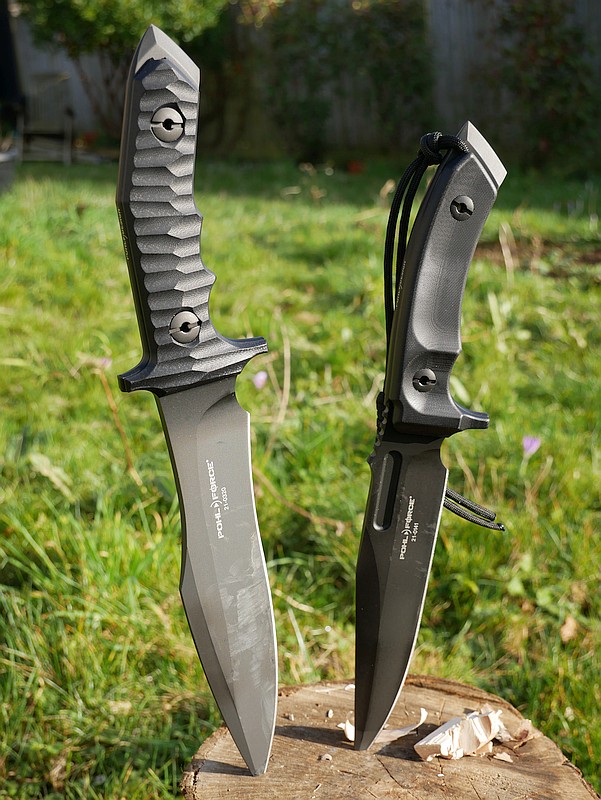
Discussing the Review:
The ideal place to discuss this review is on the Tactical Reviews Facebook Page 
Please visit there and start/join the conversation.
As well as the Tactical Reviews Facebook Page, please consider visiting one of the following to start/join in any discussion.
BladeForums – Knife Reviews (US based Forum for Knife Discussion)
CandlePowerForums – Knife Reviews Section (Largest and Friendliest Flashlight Community Forum)

